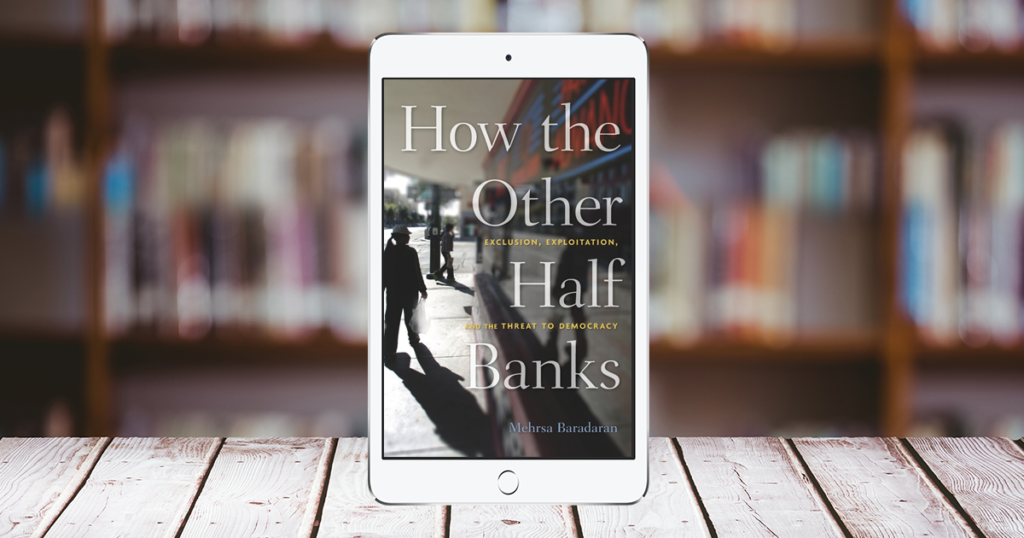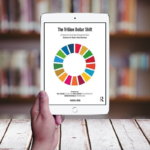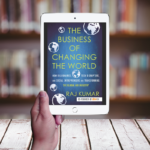In the United States (U.S.), the poor and rich operate in two different banking systems. Mehrsa Baradaran’s book, How the other half banks: Exclusion, exploitation and the threat to democracy, provides historical evidence on why these systems exist and how they came to be. The central point of her argument is that the rich and poor need similar financial services to advance in life. However, this dual system makes the poor spend more to access financial services. She explains that this situation is especially frustrating because, in reality, both banking systems are primarily subsidized by the government with taxpayer money. She perceives that the only way to achieve equality and democracy in the financial sector is for both market participants to operate in a uniform banking system. In this review, I discuss Baradaran’s view on the unbanked and how they became unbanked, how far regulations or education can go to protect consumers from financial exclusion, and the need for the U.S. government’s direct involvement in curbing exclusion in the banking sector. I also share some thoughts on the potential for digital finance and innovative regulations as possible panaceas to banking the unbanked.
Baradaran’s history of the U.S. banking system dates back to the 1700s
As the book passes through history, at different points in time, each of these banking ideologies provides a solution to the banking problems of the era. Just as the case was in the 1700s, the goal remains the same – to ensure that the most vulnerable have access to affordable and convenient financial services.
Baradaran points to several events between the 18th and 21st centuries that changed the banking system and banking services offered to U.S. consumers. These include bank regulations, new financial products, the Great Depression and technological advancements. As I understand Baradaran’s argument, the tipping point that led to today’s dual banking system was the series of events that occurred in the 1900s that led to capital flight. Most of these events were ripple effects of regulations such as the National Housing Act of 1934. The Act set out to map neighborhoods according to mortgage worthiness. An unexpected result was that areas with minorities were tagged as unworthy of mortgage, leading to an outflow of whites from such neighborhoods. She explains that banks fled with such clients, as they believed those clients were more profitable.
Unbanking happened due to a combination of factors
An important part of Baradaran’s story for how the unbanked became unbanked is her discussion of localized, or community, banks as instruments for banking the poor. Such banks were Jeffersonian-styled and prided themselves in having ideologies rooted in service to the poor or unbanked. The book explains that such institutions included postal banks and credit unions, which remained profitable thanks to subsidies or government regulations that favored them. This favoritism was because credit unions and regular banks were not under the same regulatory agencies, and they were not subject to the laws that governed the banks.
However, in the 1980s, following more regulations, institutions like credit unions shifted their ideologies towards capital accumulation. As the government tried to streamline its activities, it recalled postal banking. Also, at this time, the effects of redlining became prominent. Redlining is defined as “the practice of refusing to lend money, give mortgages or sell home insurance to people living in poor areas, or of charging them high rates for this.” Its effects caused banks to flee inner-city neighborhoods for what they considered to be more profitable neighborhoods. This capital flight from the inner cities led to the scarcity of credit in those communities. Baradaran explains that the people left behind in those areas became more likely to have credit scarcity, which created an opportunity for fringe lenders to saturate the credit market (p. 9).
The unbanked pay more to access financial services
While Baradaran mentions many interesting statistics that speak to the experiences of the unbanked or underbanked, her explanation of the harms from overdraft fees is most chilling. Banks charge overdraft fees when a consumer withdraws more money than what’s in their account. Here it is pertinent to distinguish between the unbanked and underbanked. While the unbanked do not have bank accounts and rely primarily on fringe lenders, the underbanked have access to bank accounts and pay generously to maintain them. Overdraft fees, thus, apply to the underbanked. Baradaran spoke of two occasions when banks charged money-trapped consumers overdraft fees. On one of these occasions, the consumer had extra fees, amounting to 3,335% of the original overdraft charge. The cost of using loan sharks or fringe lenders in similar situations would be 3,000 percentage points less (p. 139). Therefore, the book explains that even though fringe lenders charge more in initial interest rates, the poor are more likely to keep patronizing them because, compared to the banks, fringe lenders offer better operating times, have better customer service and cost less for the poor.
Financial education and regulation are insufficient to reduce the unbanked rates
As explained in the sections above, fringe lenders responded to capital flight from many inner-city neighborhoods by providing credit in these neighborhoods at a high cost. Baradaran explains that these businesses include payday lenders who offer loans to the unbanked in exchange for paychecks as collateral. They also obtain consent to withdraw directly from clients’ accounts or request postdated checks as payments for loans.
In Chapter 4, Baradaran provides some evidence on who the unbanked are. She explains that most of these payday loan borrowers earn between $25,000 and $49,999 and are anything but destitute. The chapter offers some more insightful statistics into how damaging the payday industry can get for its consumers. For instance, it states that the average payday lender might charge as much as an average of 300% annual percentage rate (APR). The average loan amounts are $350 per client, but costs quickly compound because of high interest rates, causing an 80% rate of deferment on borrowed loans. Finally, the chapter explains that the average payday loan client is indebted for 199 days a year. Even with these gruesome numbers, consumers continue to patronize payday lenders. A Pew Review also cited in the chapter points to the fact that “37% of borrowers said they had been in such difficult financial situations that they had taken out a payday loan on any loan offer”. These statistics highlight one thing, which is a crucial part of Baradaran’s argument – people borrow not because they are financially uneducated but because they are desperate (p.115).
Another challenge for regulation are thin legal boundaries that make it easy for fringe lenders to hide within the law or morph. Baradaran’s analysis of Operation Choke Point, a regulatory attempt by the U.S. Department of Justice (DOJ), is an excellent example. Here, apprised with evidence that banks provide credit channels to sharks such as payday lenders, the DOJ sought to stop banks from providing financial services to such fringe lenders. Even though the DOJ’s attempt was laudable, payday lenders sued the department claiming their ordinance was unconstitutional and affected legitimate businesses. In response, the U.S. Congress stopped the DOJ from going on further operations. The issue, Baradaran notes, is not just the difficulty that comes with regulation, but also the possibility that over-regulation might make credit sources even more scarce and expensive to the detriment of the poor or the unbanked.
Nontraditional stakeholders play brilliant roles in providing financial services to the unbanked
Baradaran offers some insights into other ways the unbanked access financial services. Notable examples include peer-to-peer (P2P) lenders, Walmart and prepaid cards. She explains that P2Ps function like credit unions but differ because P2Ps primarily offer credit to entrepreneurs. Their downside, she believes, lies in the fact that they could end up as profit-seeking entities just like the credit unions of the 1980s. Similarly, Walmart has, over the years, offered financial services at cheaper rates than their competitors. For example, the book cites that while Walmart offers money transfer services at $10, competitors like Western Union charge $76 for similar services (p. 175). Finally, prepaid credit cards allow unbanked consumers to load money onto cards and use those cards as debit cards.
Baradaran’s idea on how the unbanked can become banked
In the first place, it is pertinent to understand that this call for government intervention is threefold. First, the government provides trust in the banking system through the Federal Reserve which is its central banking system. Second, the book explains that bank failures would be more detrimental to consumers than the institutions themselves. Finally, Baradaran states that large banks and loan sharks get their money from the same source – the government. As the government bails out banks, the banks provide services to more profitable customers (thus sidelining the unbanked) while lending such money to fringe lenders who then charge the unbanked a considerable fee to access it. In Baradaran’s words, “If the government supports banks because they provide credit to individuals, shouldn’t the government also make sure the banks are providing that credit?” (p. 22). Her approach thus involves eliminating the middleman to reach the unbanked directly.
While the book does not explain in detail the mechanism of postal banking, Baradaran continues to share this idea with policymakers in different spaces. For instance, in July 2021, she presented her thoughts to the U.S. House of Representatives’ Subcommittee on Consumer Protection and Financial Institutions. Her presentation provides insights into how modern-day postal banking might effectively offer financial services to the unbanked. She notes that the first point of call for addressing the issues of the unbanked is to provide a physical space for them to deposit and withdraw cash. Thus, post offices are ideal as there are 33,000 branches across the country, many of which are in low- or middle-income communities where the unbanked reside. Another reason she notes why physical branches are the first point of call is because the most vulnerable people who need financial services have no mobile phones or internet to access digital banking.
My ideas on how regulation, PPPs and digital banking can help curb exclusion in the U.S. banking system
In reading Baradaran’s history, three thoughts came to mind: the necessity of regulations, the opportunity of public-private partnerships (PPPs) and the potential for fostering financial inclusion through digital finance.
First, on regulation, it is true that the government has tried and failed to protect the unbanked by regulating the financial sector in the past. This failure to get the right approach to regulation, however, should not mean that regulation as a tool for financial inclusion is redundant. On the contrary, the call for effective regulation should go hand-in-hand with the cry for government involvement in banking. Oversimplifying the effects of regulations might lead to unforeseeable consequences in the banking system, as witnessed with the National Housing Act.
Second, I was curious to see how different stakeholders could come together to create a more workable framework for financial inclusion in the U.S. through collaborations such as PPPs. A good example that comes to mind is the Indian Unified Payment System which allows the Indian government to foster competition in the financial sector without directly getting involved (Eswar, 2021). The Indian government achieved this by creating a public digital infrastructure that is open access and provides easy entry to newcomers. Given the problems with private sector lending that I discussed earlier, some might doubt whether the private sector should be involved at all. However, with adequate regulations in place to protect consumers, I believe that PPPs might help improve the extent of financial inclusion in the U.S.
Finally, as a digital finance enthusiast, I was excited to see that Baradaran mentions M-Pesa as she discussed digital banking. Launched in 2007, M-Pesa is Kenya’s mobile money product. It came to be thanks to a collaboration between Safaricom (a mobile network provider) and the Central Bank of Kenya. Baradaran notes that Kenya had an unbanked population of 80% in 2007 and that number had fallen to only 26% by 2013. While Baradaran remarks in the book that most financially-vulnerable people have no access to the internet, many mobile money systems like M-Pesa allow consumers access to financial services through unstructured supplementary service data (USSD) codes – quick codes – or mobile agents within walking distance. Alternatively, digital currencies also hold potential to help tackle issues of exclusion due to low income or capital. This potential rests in the lower cost of transacting with digital currencies since consumers have direct access to their online funds. Countries such as China, Japan and Sweden are currently in trial phases of producing national digital currencies to drive ease of finance and access to finance. I hope to see how similar financial products might play out in the U.S.
Photo credit: Ydlabs, Creativeart and Basic Books



